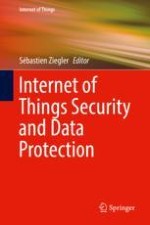2019 | OriginalPaper | Chapter
12. End-User Engagement, Protection and Education
Authors : Adrian Quesada Rodriguez, Sébastien Ziegler, Christopher Hemmens, Ana Maria Pacheco Huamani, Cesco Reale, Nathalie Stembert, Drew Hemment, Rob Heyman, Jonas Breuer, Dejan Drajic
Published in: Internet of Things Security and Data Protection
Publisher: Springer International Publishing
Activate our intelligent search to find suitable subject content or patents.
Select sections of text to find matching patents with Artificial Intelligence. powered by
Select sections of text to find additional relevant content using AI-assisted search. powered by
